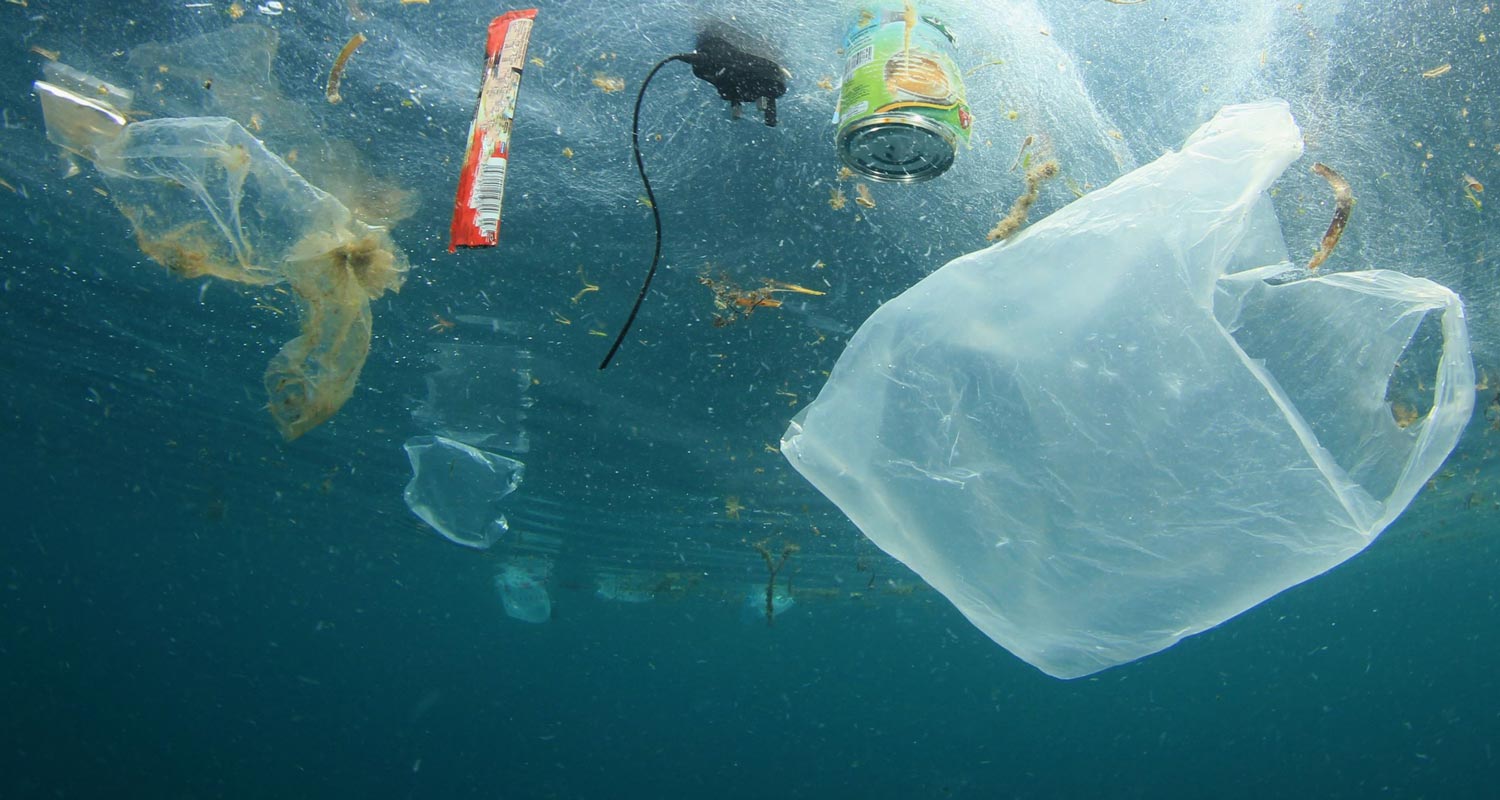
Discover our entire collection of plastic-free vegan skincare products.
If there had to be a winner of the pandemic, it would be the plastic industry. Plastic, and therefore plastic waste, has made a strong comeback since the beginning of 2020, rebranding itself as a protection agency to curve health anxieties1.
According to early estimates from The Economist, the use of disposable products may have increased by 250-300%, solely in North America2.
As flippant as it sounds, our consumption habits of these one-and-done products poison our planet, further fueling a massive threat to plants, animals, and humans, alike.
A look at the damage caused by this environmental and social crisis and the extensive transformation needed.
Ocean Pollution
The mass production of plastic in conjunction with a deficient waste management system is at the root of the impending crisis that endangers all living species. Every year, more than eight million tons of plastic is dumped into the oceans, creating islands of refuse like the North Pacific Garbage Patch. The continent of plastic stretches more than 1.6 million square kilometres, or twice the size of Texas.
Akin to this garbage patch, another was found in the North Atlantic Ocean. Made up largely of single-use plastic (water bottles, straws, grocery bags, etc.), the main culprit of ocean pollution is a nightmare for marine animals, with more than 90% having already ingested plastic.

The Impact on Human Life
Plastic waste doesn’t affect only wildlife; it impacts human life as well. While there are plenty of videos circulating on the internet of turtles with their nostrils clogged by straws, the same cannot be said about the dangers of plastic waste on human health.
Over time, the plastic in the ocean is broken down by the waves and sunlight into small fragments called microplastics. These microplastics amass in soils, rivers, lakes, and all other aquatic habitats, and are then consumed by the fish.
Once eaten by the fish, these microplastics move up the food chain to humans by process of bioaccumulation. A published research review from 2019 determined that at least 74,000 microplastic particles are ingested, per year, by an American person just by the simple acts of eating, drinking, and breathing3.
Furthermore, plastic waste is primarily flooding regions and communities that are not prepared to confront such problems. For example, when China halted the import of American and European waste in 2018, Thailand, Malaysia, Vietnam, and Indonesia were affected instantly.
Now bombarded under heaps of trash, the host lands notice their population suffering from various health problems associated with toxic gas emissions caused by the incineration of plastic. And when plastic waste isn’t shipped abroad, it’s often left residing in the most vulnerable communities4.

Waste Management Systems Failure

If plastic can be recycled, why is plastic waste such a big threat? In the US, despite the good-natured people who put tens of thousands of tons of plastic in the recycling bins every year, only a paltry 8,7% of this waste is recycled5.[5] The rest is incinerated or sent to either a landfill or abroad.
The Solution: Changing the Model of Consumption
If recycling isn’t the solution, what can be done to fight against plastic waste? At ATTITUDE, we believe that a model change is necessary. That is why, we ourselves, have begun to transition to a a more sustainable and circular model of consumption that relies on plastic-free, refillable, and reusable packaging.
Understanding that packaging materials make up nearly half of all plastic waste in the world – most of which is never recycled or incinerated – we are innovating to devise solutions that help eradicate single-use plastic.

All our bottles are made from #2 HDPE plastic. These recyclable, opaque, waterproof and impact-resistant bottles are also reusable. Our sturdy bottles of cleaner, dish soap, hand soap, detergent and more can be reused multiple times using our various eco-refills. They contain up to four times more product, but 80% less plastic than their counterpart in bottles.
Correspondingly, our entire line of leaves bar™ hair and body care bars acarefully packaged in recyclable, plastic-free cardboard and all Oceanly™ skincare and makeup packaging is made from biodegradable cardboard, to take care of you and the planet.
Would you like to know more about plastic waste? Read our articles on the genesis of the crisis and keep an eye out for more concrete solutions that will help you reduce your consumption of single-use plastic.
You can also read our articles about:
- Blue beauty: the new eco-friendly beauty
- Plastic pollution crisis: The origin of plastic waste
- How to create a plastic-free skincare ritual

Sources:
- https://ici.radio-canada.ca/ohdio/premiere/emissions/moteur-de-recherche/segments/chronique/339952/plastique-usage-unique-environnement-pollution-pandemie
- https://www.greenpeace.org/international/story/21792/plastic-waste-environmental-justice/
- https://ici.radio-canada.ca/nouvelle/1418402/plastique-recyclage-quebec-cout-importation-materiau
- https://www.epa.gov/facts-and-figures-about-materials-waste-and-recycling/plastics-material-specific-data